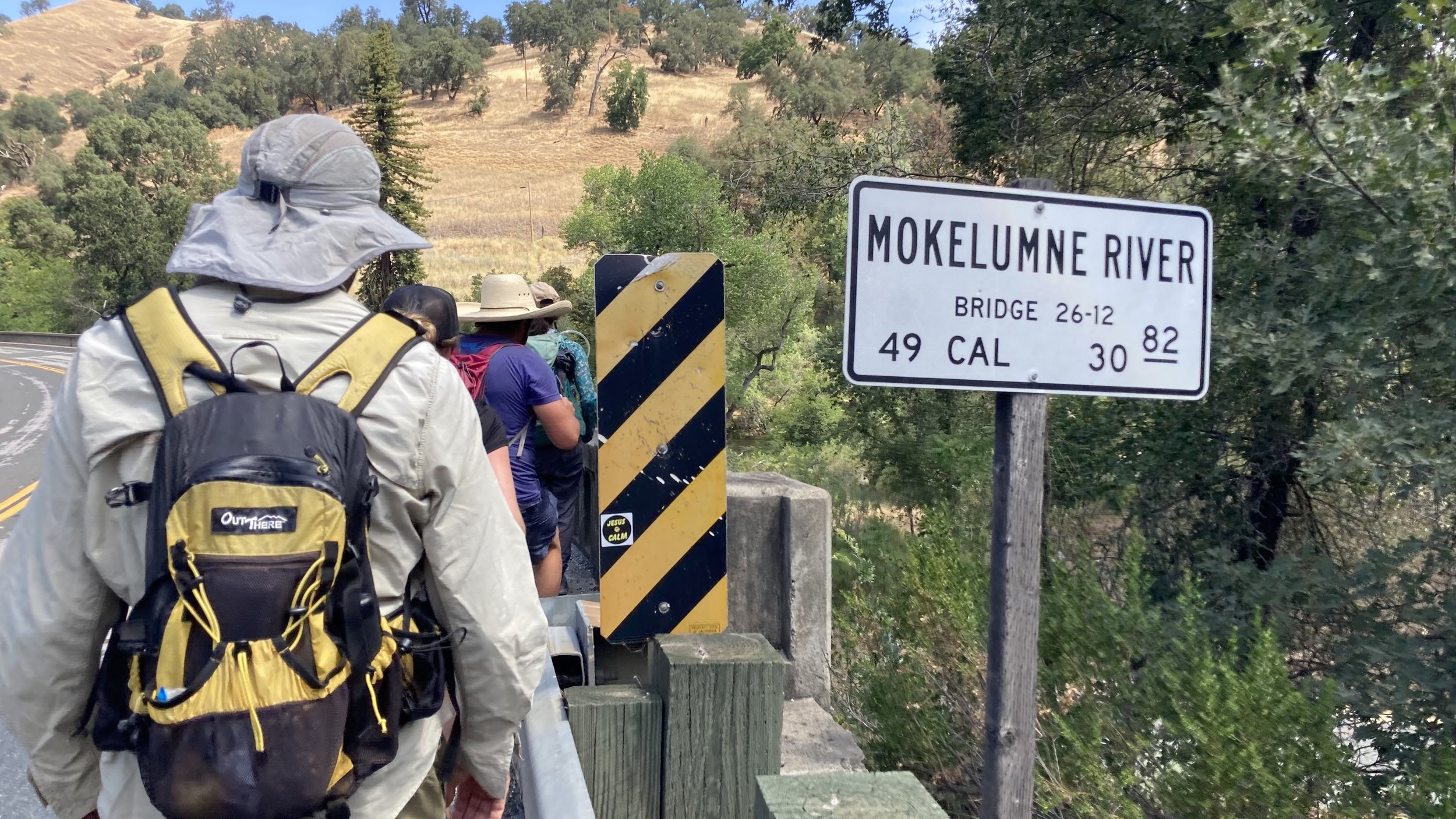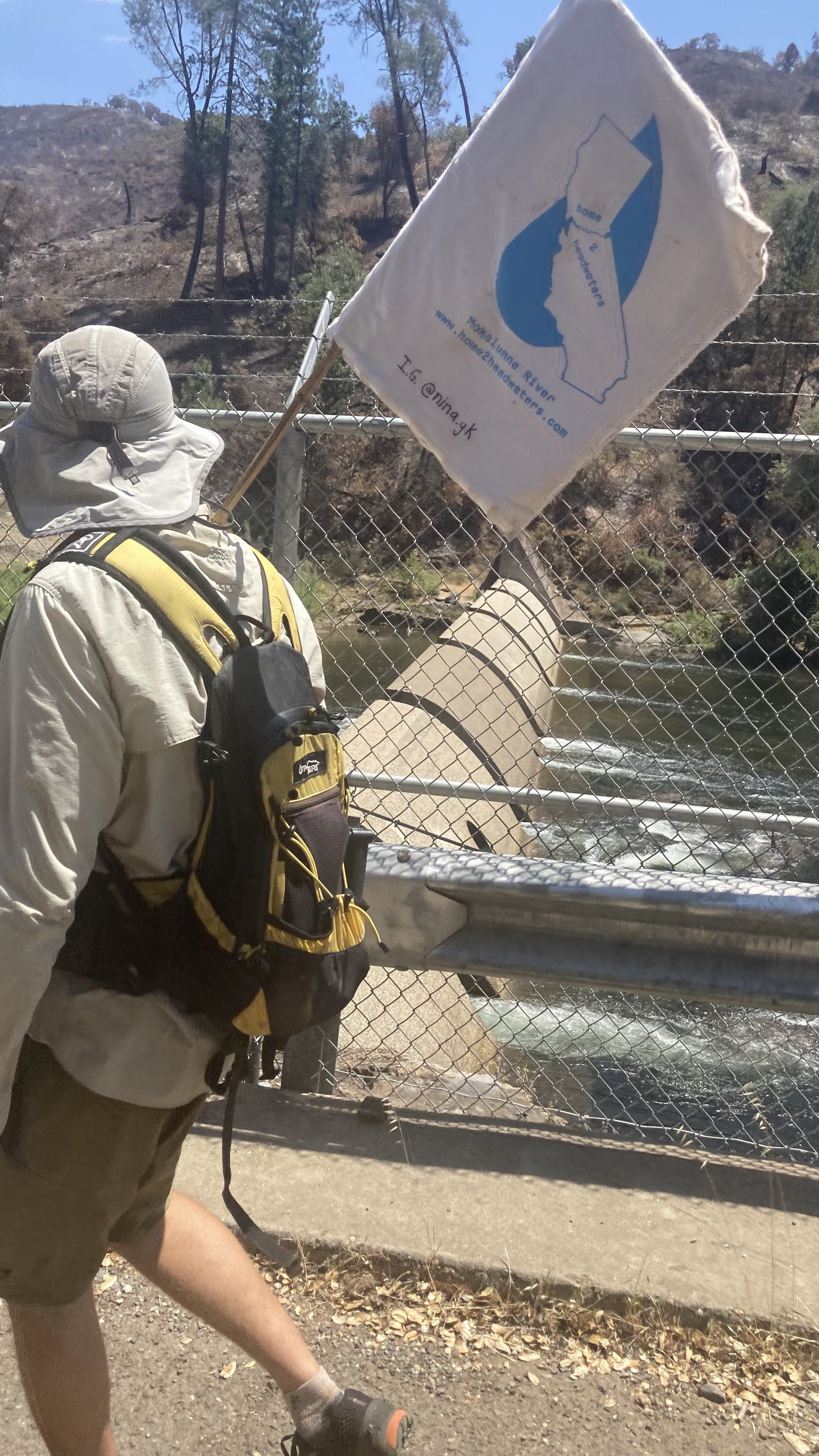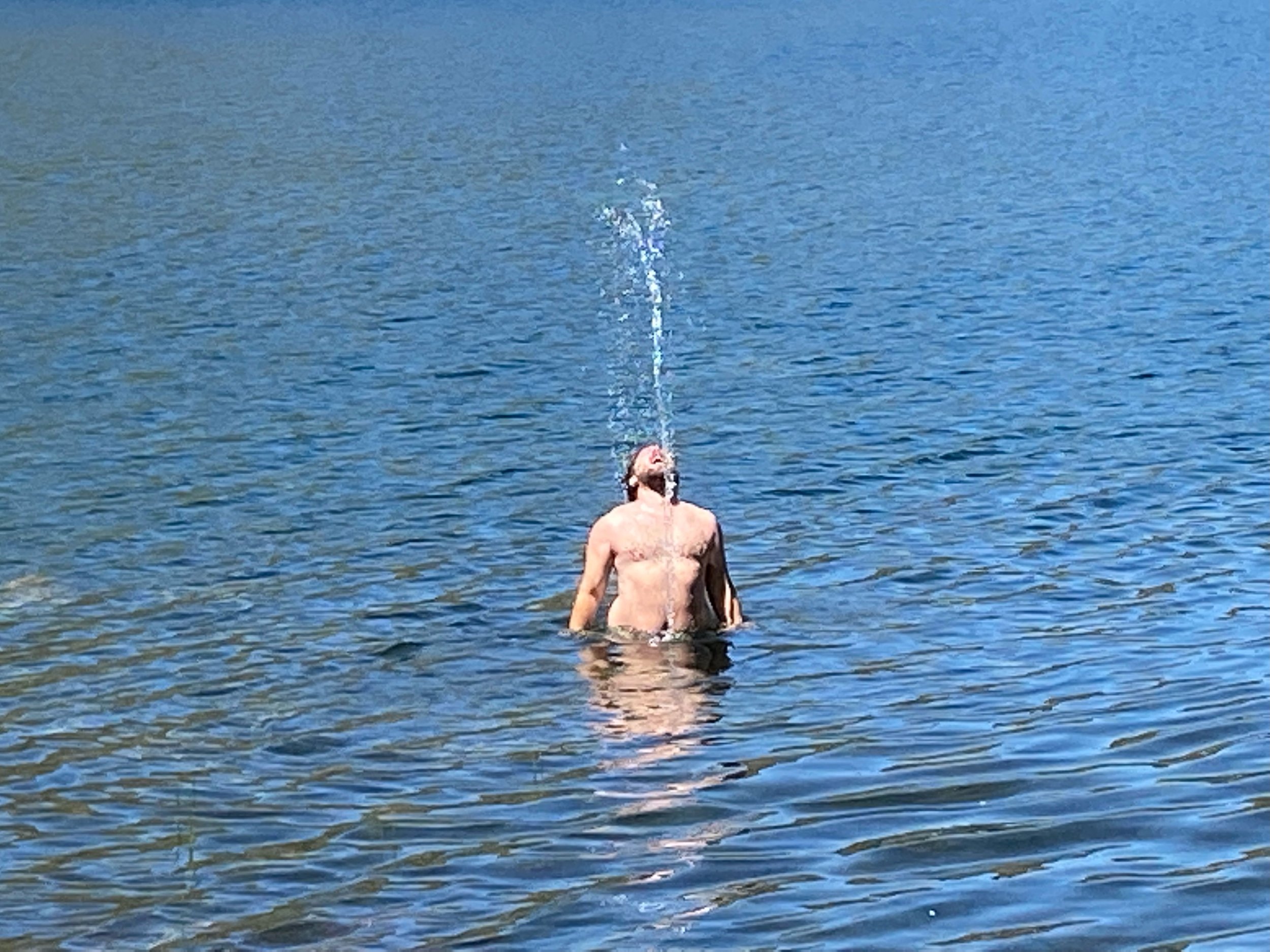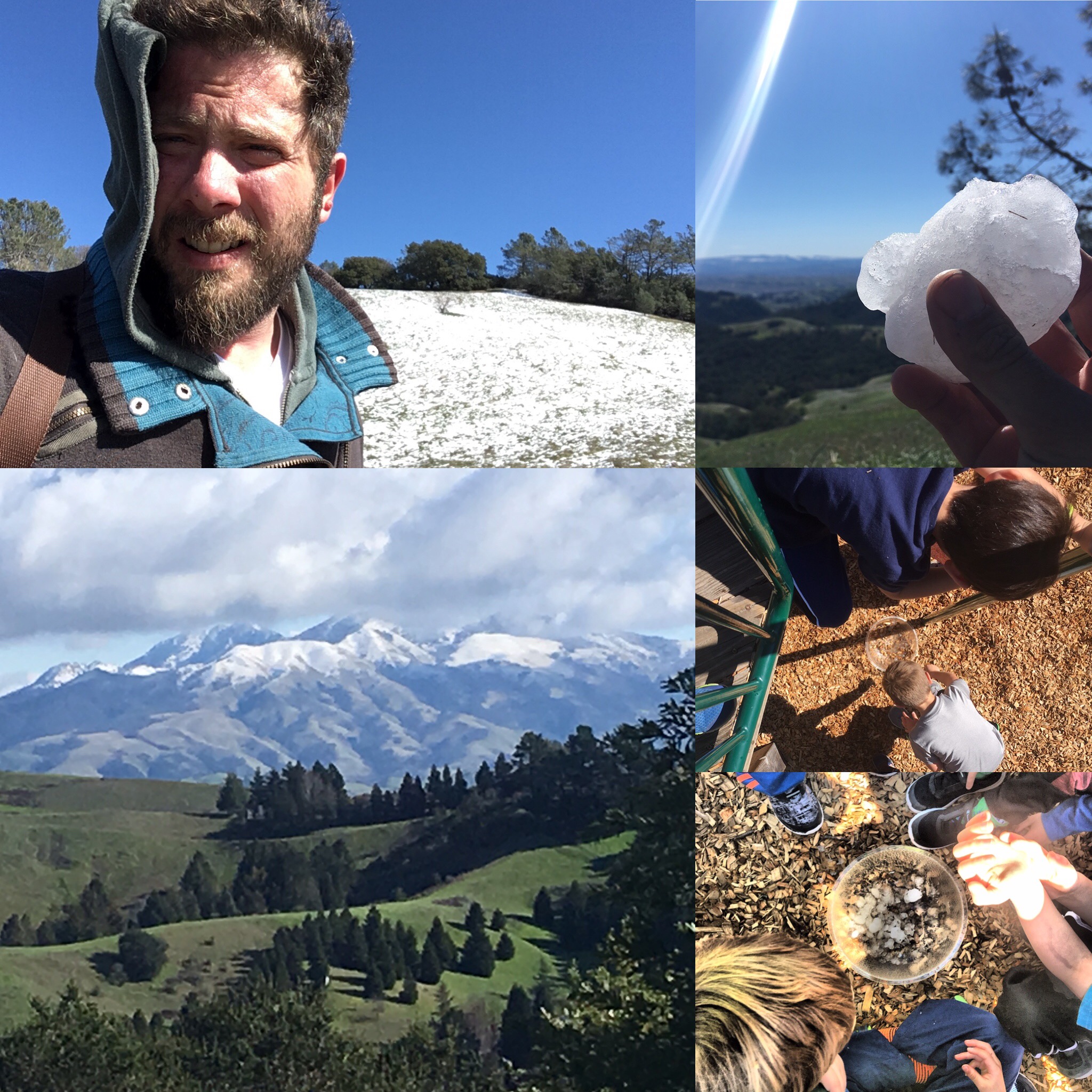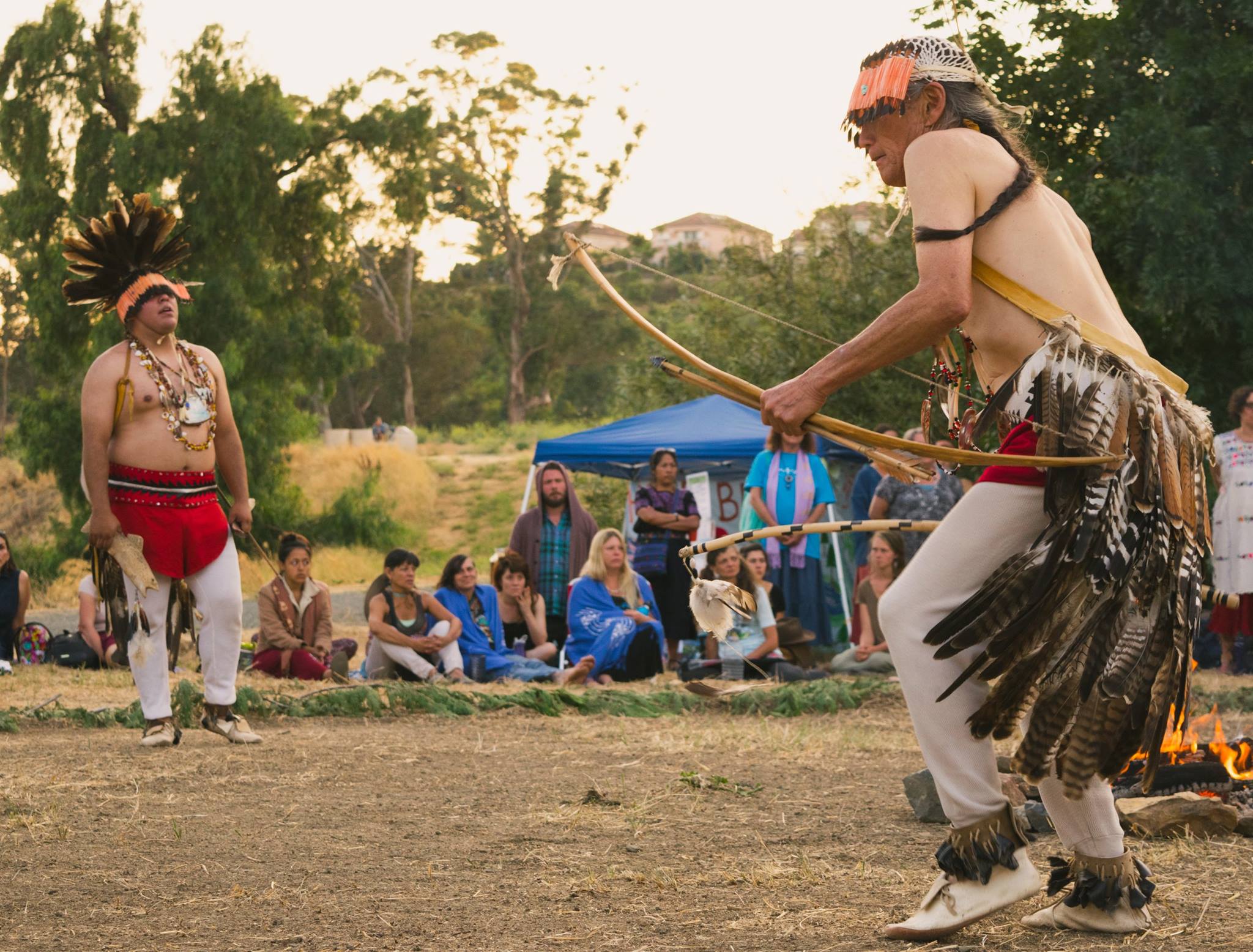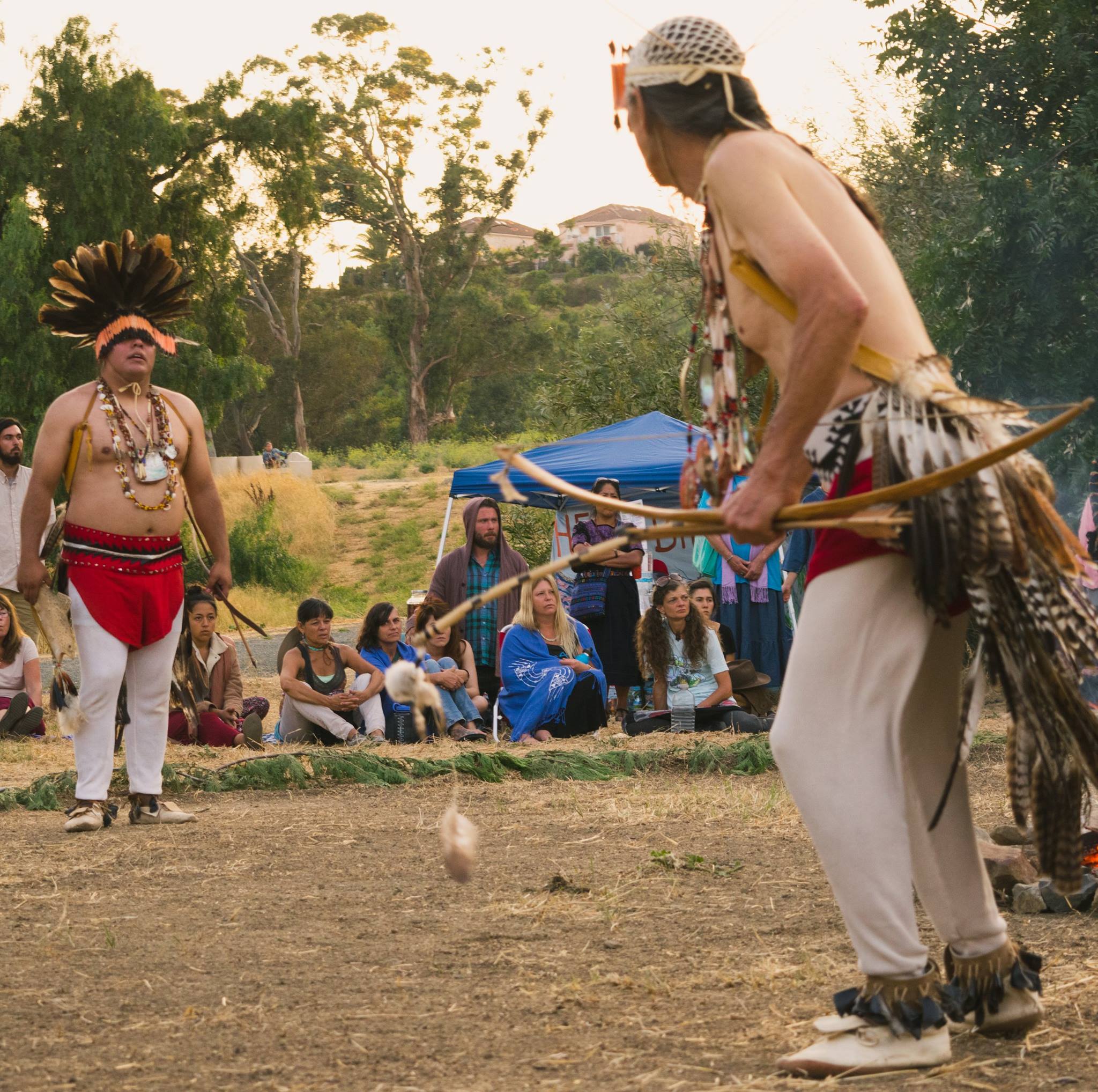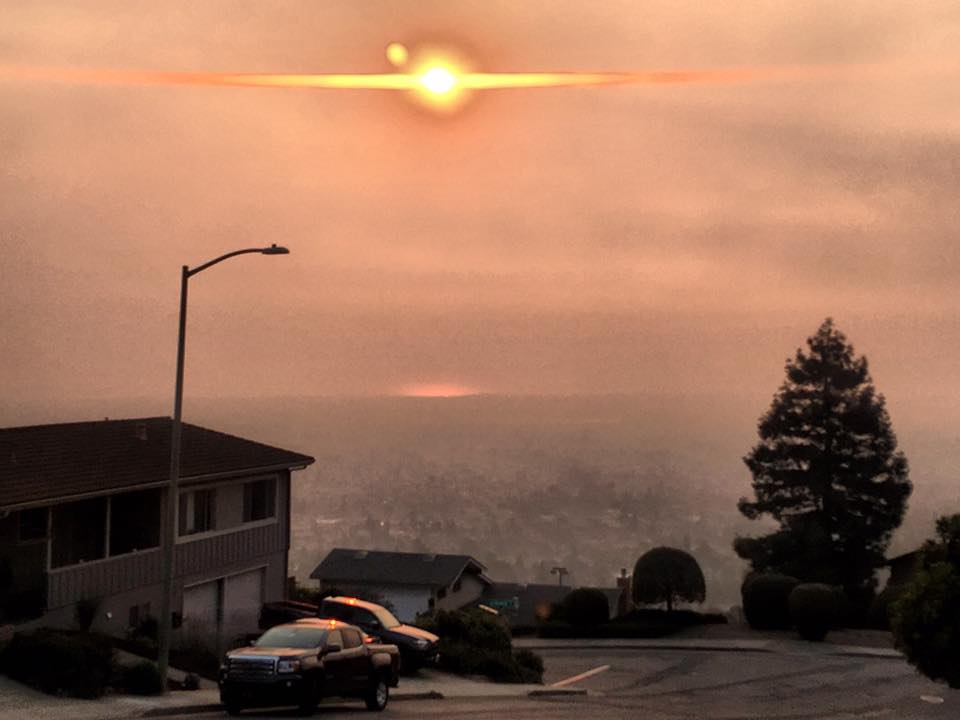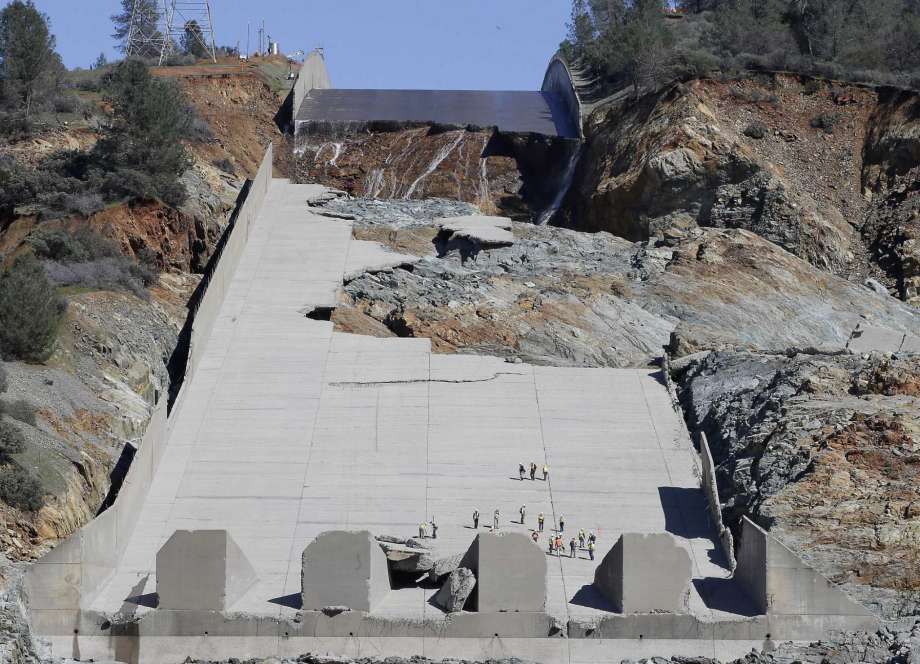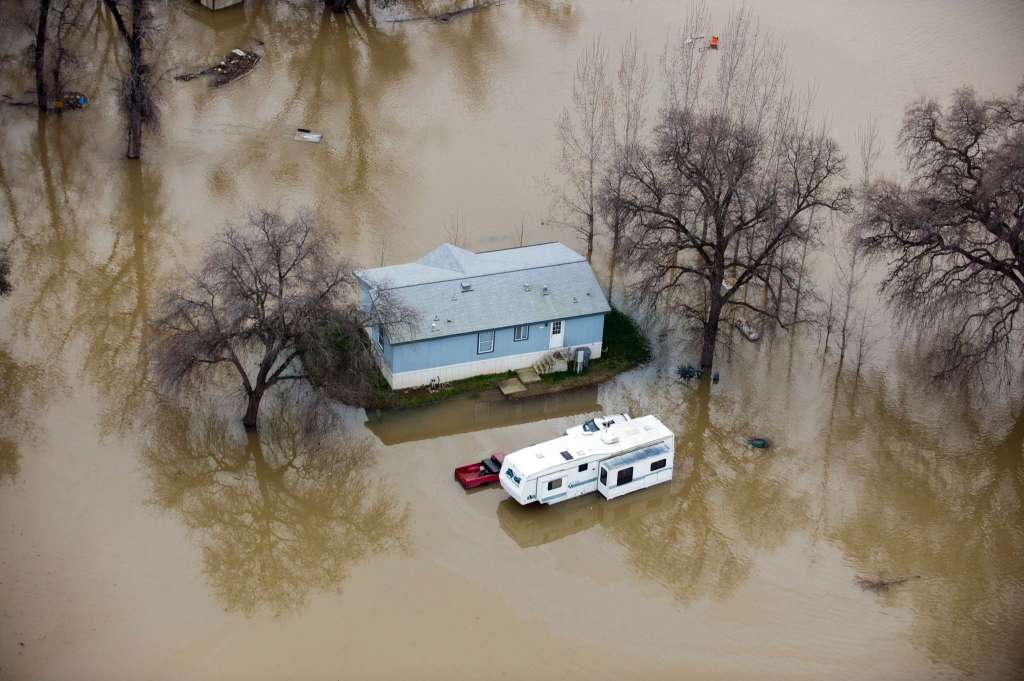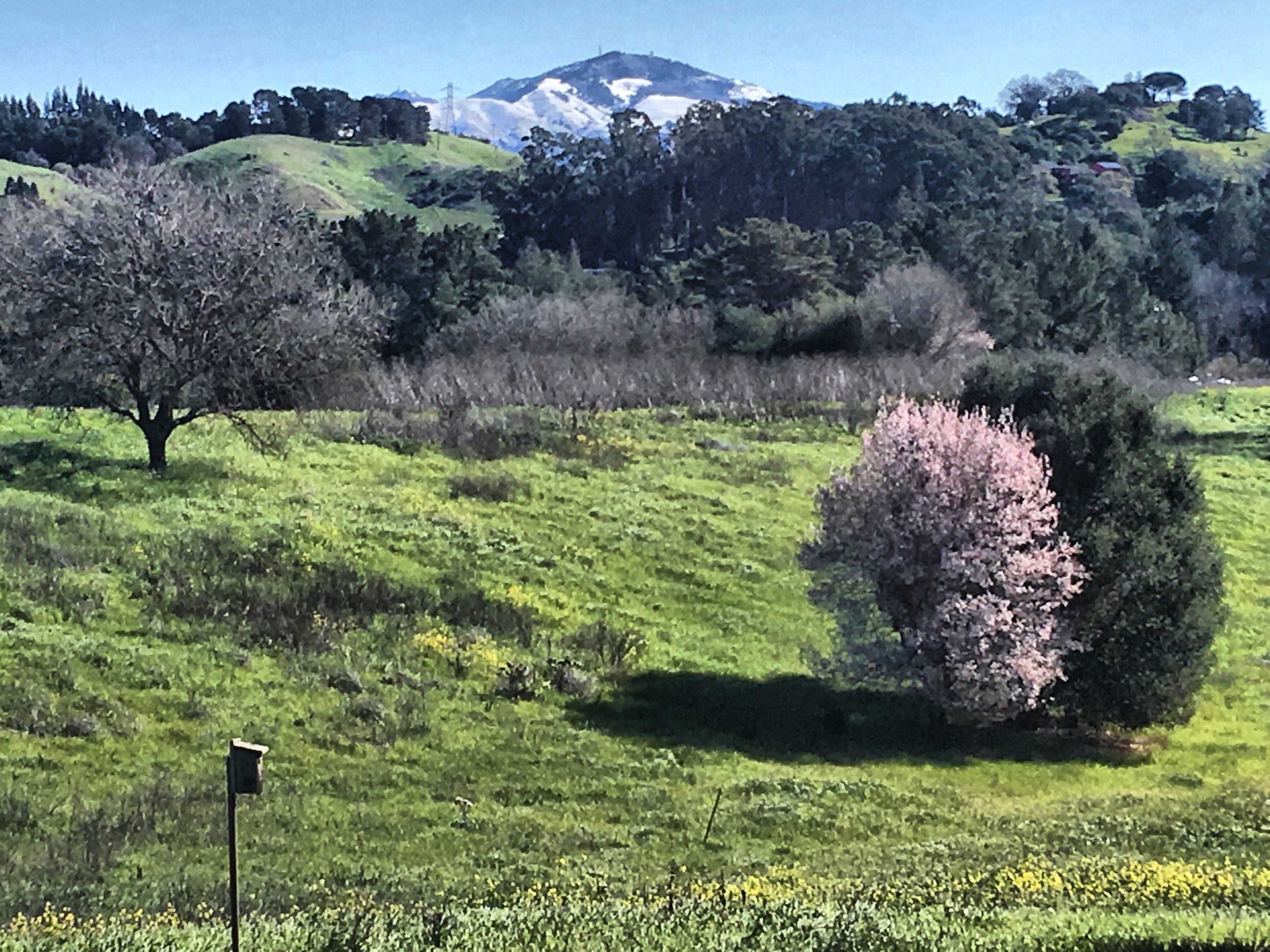Bay Area
Watershed Update:
Spring 2025
The shift between winter and spring brought rains and snows, on and off, to Northern California, gentle and coaxing enough to soak in instead of run off ~ we didn’t have to bear thirty atmospheric rivers in a row this round, though we did have to respond to lies from the US president about where water flows through California.
Escalating threats to our watersheds (mass-deforestation, decimation of the EPA and Forest Service, the further raising of Shasta Dam ~ just to name a few) impact our home’s life support systems not just today, but far into the future. Hands-on outdoor education becomes all the more vital.
In January 2025, Watershed Witness Tours partnered with Camellia Waldorf School in Sacramento ~ bringing fifteen 7/8th graders up the river that provides both the background for their upbringing, and the drinking water they rely on.
We began along the river next to their school, dropped by the Dragonfly Intake that brings forth their neighborhood’s drinking source, visited the very different confluences with the American and Feather rivers, oriented to the Sutter Buttes where the Kuksu dance ceremonial culture arose, the site of the 1846 Sacramento River massacre, and the future site of Sites Reservoir, intended to alleviate SoCal’s water needs by 15%, as we drove up the Central Valley’s long former and future seabed.
We caught dinner at Sundial Bridge in Redding, and the kids were stellar, ready for all the creative, fun, and challenging aspects of both the watershed history, and the trip itself up the long length of river. We camped just a few minutes from the fresh water spring that bursts from the rocks below Mt. Shasta, the very start of the Sacramento River, and filled our water jugs in the morning before touring Shasta Dam and the Coleman Fish Hatchery on our way downstream.
The exposed orange reservoir banks of Shasta Lake are what inspired Watershed Witness Tours ten years ago in 2015, and it was an honor to return with such an inspirational group of future water warriors. An enormous debt of gratitude to the Winnemem Wintu Run4Salmon curriculum, the first place anyone should look for interactive education which honors the sacredness of this sacrament-named river, centering the struggle of salmon and successful prayer pilgrimages of this indigenous community.
AUTUMN 2024 brought especially extraordinary chances to draw AWE, genuine magic just looking up in the sky ~ which can feel like gifts, when how much must shift around this world seems staggering.
A few fierce wind events, a scattering of rain in the Bay, dusting in the Sierra Nevada, and Oakland saw one fire contained pretty quickly, thank you. A sincere reminder how much we rely on each other through our local dances with disaster.
THEN, right after the election ~ we got bombarded by this season’s first ATMOSPHERIC RIVER + BOMBOGENESIS, which glanced the Bay Area but hit the Cali-Oregon border directly ~ before that persistent ridge reformed in the Pacific, protecting us from more inclement weather...for the time being.
Rains fell steadily across winter solstice season, with reports that the Mokelumne Hatchery reached record salmon runs again this year! What will 2025 bring for us all?
Summer 2024: Future forecasts
2024’s Bay Area springtime brought lingering cooler rains, hillsides of flowers extending our pollen allergy season (Josh recommends local honey of course) and an approach towards summer solstice with only a few hints of real heat, just distant wisps of smoke. Remembering to appreciate temperate weather while it’s here ~
wet weather eases away from the Bay
CALIFORNIA CAN CELEBRATE REPLENISHMENT FROM DROUGHT…FOR NOW. More wet winters are requested from rain spirits ~ to hold hope of avoiding our mad rush towards mega-drought.
This 2024’s seasonal rains and snows were "classic Cali winter" ~ not 30 atmospheric rivers in a row, but robust enough that our rivers and reservoirs are currently full! Bay Area’s drinking water storage sits above historical capacities, and each section of these rivers are flowing gorgeously.
Watershed Witness Tours offered another local HIDDEN WATERFALLS of the EAST BAY tour in April, drawing families, kids, and puppies along Las Trampas Creek in the Lamorinda area.
Josh was honored to join one of the world’s deepest ecological teachers, JOANNA MACY, approaching her 95th birthday. Joanna just wanted to see spring’s flowers, listen to birds sing, smell a splashing stream ~ if Josh knew of an accessible waterfall he could bring her to ~ some blooms with our doom and gloom.
Our watersheds still face challenges. THE MOKELUMNE BATTERY PROJECT, a proposed 400mw hydroelectric plant and tunnel between Salt Springs Reservoir and Lower Bear Reservoir (where we usually camp on our Mokelumne tours) could block access for 3 years from the Wild and Scenic portion of the Mokelumne ~ places that have held the soul of our outdoor immersions. Thanks to the Foothill Conservancy for bringing our attention to this project, and for securing Wild and Scenic status for the Moke after decades of effort.
GreenGen, a private developer, intends to create renewable energy (and profit) shooting water back and forth between these two Mokelumne reservoirs ~ we’ll see if mitigation intentions, and community involvement, can ameliorate impacts from reservoir water levels rising and falling 3 feet daily, widened forest roads for heavy trucks, and all kinds of potential disruption to wildlife, recreation areas, and the East Bay’s drinking water just downstream.
don't rainbow and drive!
This hydroelectric proposal is still unapproved, and seeking public input, so we recommend filling out this survey (especially if you’ve camped with us at Lower Bear River Reservoir before).
We’ll explore an alternative overnight location for our next Mokelumne tour on Aug 10/11th, 2024, car-camping at PiPi Campground, on the especially magical Consumnes River, a tributary of the Mokelumne,
This remarkable river does have a few new reassuring updates as well:
~ The MOKELUMNE COAST to CREST TRAIL, building on 30 years, dedicated to expanding access to every portion of the Moke, recently celebrated nearing the halfway mark in their efforts, to connect separate sections of trail. This will especially benefit river seekers in the vein of Nina Gordon-Kirsh, who walked 240 miles from Oakland to the very tip of the Moke headwaters, but had to kayak and trespass through parts, an issue this trail would remedy.
~ The MOKELUMNE FISH HATCHERY at CAMANCHE RESERVOIR also welcomed record numbers of hatchery-raised Chinook Salmon in 2023 ~ 20,000 adults swam through, spawning 10 million eggs, the most impressive run in over 80 years. Still seriously threatened, and tragically down from historic numbers, the success of this Mokelumne salmon support offers a few opportunities for learning.
Releasing these anadromous fish down through the delta, and along the coast, proved more successful than releasing them near the hatcheries. The Moke's pulsed releases of river water allures fish upstream from the ocean, towards their birth/death cycles, returning home. These record returns were helped by 2023's overabundant snowmelts running cold and fast, as well as the suspension of the salmon fishing season by local fleets ~ which will happen again in 2024 to protect this year's salmon runs.
Joanna Macy, 95, climate guide emeritus, at Bear Creek Falls
HETCH HETCHY, recognizing it’s 100TH YEAR providing drinking water for SF, remains a symbol for a new challenge from Rally for the River, a Tuolumne River Trust organized protest at City Hall Tuesday Apr 23.
A coalition of 10 organizations joined to support higher water flows on the Tuolumne, and to divert resources towards restored floodplains, which support salmon more effectively. Chinook remain especially threatened in the Tuolumne watershed, which often flows at only 20%. Salmon babies are also more likely to be hunted by invasive bass in the warmer, slower, shallower, overgrown river waters.
The TUOLUMNE RIVER TRUST is also supporting the June 2024 opening of California’s newest State Park, and largest floodplain restoration project, Dos Rios Ranch ~ at the confluence of the Tuolumne and San Joaquin rivers! We’ll be exploring this newly accessible park on our next Tuolumne tour.
Shifting seasons no longer seem to actually switch without a few false starts. California’s cold rainy deluges were mostly directed towards LA over these last few months, and we managed to come through a milder 2023 warm season of heat and smoke. But each month seems to be the hottest on record somewhere. The oceans are continuing to cook. Will this summer bring the heat back towards our part of the world? Will our portion of headwater snows surrender slowly, replenish underground aquifers, and continue their crucial flow towards our homes?
Let’s go check all that out!
Spring 2023: Drenched!
A sopping Spring Equinox pummelled the Bay ~ bringing bomb cyclones with ferocious winds, and increasingly overwhelmed and damaged infrastructure across the area. As we recovered, hopefully we caught moments to remember, to celebrate, to enjoy this pleasantest part of the cycle, verdant and flower-overflowing respite ~ between snow accelerated gathering floods, and ferocious fuel-fed fires. Climate whiplash comes along with choosing California (or really anywhere on Earth) these days.
Fish ladder at Redwood Creek, Lisjan/San Leandro watershed
Pt Reyes springtime marsh rush
Banana slug fording a major fjord
Drake Estero, where first white colonizer landed in 1579
Winter 2023: LOCAL SNOWS!
Bay Area Hills Receive Real Winter
A rare chance to slosh around in blistery-blustery BAY AREA SNOWSTORMS ACROSS OUR NEARBY HILLS! Sibley Volcanic Park above Oakland received several inches of snow, and lots of folks played in powdery ground cover along Grizzly Peak above Berkeley. The last time it snowed this much in Berkeley was in 2008. The last time a grizzly bear was sighted (eating a guy) near Grizzly Peak was in 1860. With more rains on the way as winter approaches spring, we may pass both reservoir AND ground-water thresholds where our short-term drought worries could begin to ease. But if more warm atmospheric rivers melt the Sierra’s mass of snow rapidly, the potentials for intense flooding rush towards us ~
Rivers in the Sky Arrive
~ Again and Again
What a weirdly different universe when the Bay Area gets as wet as this. Every single creek rushing and gushing. Every green being ready to burst. As always, sending safety to everyone in the path of something worse ~ including over 500 mudslides state-wide, and many dozens of sinkholes. More than a half-year’s worth of rain fell onto parts of the Bay in the first two weeks of 2023.
As a true benefit of these 9 atmospheric rivers, especially bracketed by slower steady rain in between, our Bay Area’s drinking water reservoirs have had a chance to re-absorb and fill ~ as of 1/8/23, EBMUD reservoirs stood triumphantly at 84%, Hetch Hetchy at 80%, and all Mt Tamalpais reservoirs that serve Marin were overtopping their outflows ~ reducing our local drought load dramatically (for this season) and with even more rains likely, plus a dozen feet of snow (some regions snow-packed 250% above average) still to melt across the Sierra Nevada.
Oakland beat a previous rainfall record set in Jan 1982, the very same storm that Joshua Halpern, our Watershed Witness Tours founder and guide, was born in. On 1/4/82 the Bay Area got pummelled, especially inundating places we've built over where water used to fill. Heading east, as it reached New Jersey the deluge became a blizzard into which Josh was born on Jan 8. Then, on 1/13, the same storm brought a plane down into the Potomac River in DC.
In the 2020s, we’ve learned to expect these records broken almost every season. Unfortunately, it will take an intensely while longer, so many more months of rains like this, to overcome California’s worst megadrought in 1200 years ~ and our infrastructure needs vast adaptations, not just to prevent floods and mudslides in places we’ve built homes where water’s always flowed, but to preserve more fresh drinkable water when so much gets returned to the oceans, all while striking an ecologically crucial balance between our human needs for cities, agriculture, and the deteriorating health of these vital living rivers.
Here’s hoping that chances for rebirth continue swirling within life’s worst storms.
May these wet winds whistle your spirit.
May these rainy rests replenish every depth of your parched aquifers.
Autumn ‘22: Rainy On and Off
~ Like OG NorCal
Chatting about the weather with folks who’ve lived in the Bay Area for generations, the last bit of 2022 felt like old times. A few days of rain, then a week or so off, then another rainy week, then a short reprieve before a few more wet days. Not the intense pendulum of impenetrable drought and blistery-blustery deluge we’ve been bombarded by these last several years, climate whiplash projected to accelerate as we plunge deeper into decades of dance between megadrought and atmospheric rivers. But for this season, some sweet familiarity, reassuring gentle pitter-patters, real accumulation of snow in the mountains. Let’s see if the winter’s wetness can make headway through the deeper dry.
Visiting the Leo Cronin Fish Viewing Area in Marin on Dec 11, 2022 ~ WE WERE ABLE TO SPOT SPAWNING COHO SALMON and STEADFAST STEELHEAD TROUT at the confluence of San Geronimo Creek and Lagunitas Creek, across from a series of pouring pools known as the Inkwells. This area is the most protected zone of the watershed where the largest Central Cali population of anadromous fish can return, called back from their adulthood in the ocean to the same curve of riverbank where they were born, and in the last act of their lives, they squiggle and flutter, laying eggs along the gravel beds, and giving their bodies back to the forest, feeding future generations large and small.
Witnessing Winter Wet Enough for Spawning Salmon and Trout, Lagunitas Creek, Marin, Dec 2022
Drought Digs In ~ Summer 2022:
Do you want to go see the drought's effect on your own drinking water? What an emotional question during an already intense year.
The Bay Area recently experienced several sweet fire-season quenching rains this first half of Autumn 2022, with exquisitely fresh feet of snow in the mountains, and everything green bursting and bright again. Can we rely on periodic rains like this to relieve the worst drought in 1200 years? Unfortunately we’ll need so much more drenching than what we’ve received so far this season.
Nevertheless, good news for Bay Area residents ~ as of Fall Equinox 2022, there was still plenty of drinking water in our Bay Area particular reservoirs, for us, for now. Pardee Reservoir holding East Bay water was at 91%, SF's reserves in Hetch Hetchy were at 88%.
Summer 2022 marked wonderfully deeper expansions and connections across Watershed Witness Tour’s community ~
In July 2022, Josh was able to amble along with Nina Gordon Kirsch’s Home2Headwaters journey for a portion of her 240 miles trek, WALKING FROM HER HOME IN OAKLAND, ALL THE WAY UP TO HIGHLAND LAKES with their very tippy-top trickles of the Mokelumne River watershed. Josh joined just as she met up with John Silva, who had only a few weeks earlier backpacked/bicycled/kayaked the entire Mokelumne River over 29 days, from 9337ft Mokelumne Peak downstream ALL the way out through the Golden Gate ~ supporting Foothill Conservancy, who helped secure the Moke's Wild and Scenic status, and bring awareness to hydroelectric projects at Bear River Reservoir, where Watershed Witness Tours usually camps on our Moke overnight tours.
Nina and I had shared the first covid/masked Watershed Witness Tour in 2020, we had gone over maps to discern her best route up the river, and I’ve been honored to be a part of her epic water reconnection adventure. Along with John, and Megan Fiske of the Foothill Conservancy ~ Josh was so happy to be among local river lovers/experts! ~ WE WERE THE FIRST MEMBERS OF THE PUBLIC TO TOUR THE FIRE-SHED site of the #electrafire ignited on July 4, 2022 at Vaught’s Beach (illegal fireworks?) around where the Mokelumne shifts between foothills and mountains. The fire spread so quickly 100 people had to shelter at the Electra Powerhouse as fire raged around them. 4000 acres in 24 hrs. But John and Megan discussed their experience of this area burning in seven year cycles. And how their heartbreak and fear adapted the more times they’ve gone through a localized disaster like these wildfires.
Josh was also able to visit friends (and former Watershed Witness Tour-ers) who maintain a cabin above the Mokelumne wilderness upstream from Salt Springs Reservoir, and enjoyed unexpectedly rainy tributary explorations. Later in August, Josh was glad to be able to offer an INTEGRAL ECOLOGICAL TUOLUMNE WATERSHED PRESENTATION among a group of environmental lawyers based out of Twain Harte, developing their own tours of nearby Cherry and Eleanor Lake, both gorgeous gems on the Tuolumne system near Hetch Hetchy. Jumping into alpine lakes was a highlight of both sojourns, as was real gratitude for deepening connections among river appreciators.
Watershed Updates 2021-2022:
AUTUMNAL ATMOSPHERIC RIVERS and OCTOBER CYCLONE BOMBS drenched the Bay in record rains, and we received our early season soakings gratefully and gracefully. Creeks swelled, crested, and then calmed. Phoenix Lake on Mt Tamalpais in Marin, a puddle of its former glory, emptied intentionally in an effort to supplement the county’s drinking reserves, filled up again within three days.
Then…NOTHING. NOT A DROP for the FIRST THREE MONTHS of 2022. Record dry months, and research revealing the DEEPEST DROUGHT in 1200 YEARS. Sweet April showers brightened mountains with a few more feet of snow, and our local green hills got one more flush before golden grasses descended and dried.
We in the Bay Area are fortunate that we haven’t come close to the level of mandatory water restrictions faced by municipalities around the globe, including small dry towns in southern California that are out of water now, already, because they don't represent major economic interests for the state. Both major Bay Area water companies have so far only asked us for the lowest level 10% voluntary restrictions.
Luckily, our water use in cities across the Bay region has steadily declined since the last drought, through conservation efforts and diversified water sourcing that have proved effective, though we have a long way to go. Our water is also gratefully much more clean than sources billions of people have access to around the world. My most recent time in front of a crowd of people was at Nerd Nite Oakland in 2019, where I offered a presentation exploring a lot of these themes.
On our tours we dive deeper into the multiple political, cultural, ecological, spiritual stories ongoing along these rivers, but here are just a few challenging updates:
San Francisco and the State of California are still litigating over Tuolumne River water flows, whether to slow water down to protect the health of the river ecosystem and already devastated salmon communities, or speed it up so it gets to the cities and larger farms faster. Compromises remain hard to come by for something so fundamental.
Camanche Reservoir on the
Mokelumne River, July ‘21
And while our main reservoirs are mostly full ~ praise be to all water gods ~ our supplementary smaller lakes were much lower. Overall total drinking water reserves for EBMUD at Summer Solstice 2022 sat at 64%. Camanche Reservoir just downstream from Pardee was at 46%. We visited this low lake halfway through our tour. Bear River Reservoir where we camp up in the headwaters is at 64%, same percentage as the whole system.
Our new boundary teacher the Pacific Persistent Ridge remained consistent this year, blocking sky rivers from pouring towards California’s stretch of coast. Aside from one powerful wet, windy, snowy storm that pummeled the Bay and Sierras on Jan 6th 2021 {matching in intensity the insurrection across the continent, and reflecting that day’s astro-weather of Mars (force) conjunct with Uranus (surprise)} it was otherwise an extremely piddling puddle drying season, and no springtime sloshes to speak of, tracking closely to 1976’s driest winter on record.
Feel free anytime to check these official sources for East Bay and California daily reservoir levels. We're currently nowhere near Oroville's 34% or Mendocino's 26%, but we'll have to see how low we go before the rains return.Daniel Swain, a bubbling wellspring of up-to-the-minute twitter climate education, is predicting shorter and sharper rainy seasons, exacerbating the dangerous crossover cycling of super dry landscapes and scarily strong winds. Over the next few years, climate scientists expect pendulum swings between drought and deluge ~ unless, we really are beginning a decades-long megadrought, which goes right along with the other accelerating unbearable uncertainties arriving this decade, and if that proves to be our future, what I want to say is ~ please, let's check out the river that keeps us alive while the river's there.
Wasn’t clear we’d make it to Summer 2021, but we keep learning to ride these currents, huh?
Watershed Updates 2015-2020:
WATERSHED WITNESS TOURS first visited these watersheds in Summer 2015, witnessing our reservoirs at the bottom of a five year drought. Since then California has swept through three of the wettest winters ever ~ and as of Spring Equinox 2019 we were officially OUT OF THE DROUGHT for the first time since 2011!
The intervening years became record breakers. The rains were relentless. Reservoirs overflowed. Dams and hatcheries were overwhelmed, the Tuolumne spillway opened for the first time in twenty years, and Lake Berryessa's glory hole started sucking again for the first time in a decade. 24 California counties received disaster declarations in 2016, and while overall Bay Area infrastructure held, places like Big Sur along the coast were blocked for over a year by landslides, and the Oroville Dam spillway on the Feather River North of Sacramento finally failed from flooding in 2017, prompting the mandatory evacuation of 190,000 people downstream. The spillway was only fully repaired recently, in March 2019.
Before the rains stopped that first winter, EBMUD, the water supplier for the East Bay reassured their customers that "not another drop is needed." Meaning any extra water was lost, returned to the ocean -- revealing our lingering need to learn how to make the most of our rainfalls, to change California's short-sighted and imbalanced historic relationship with groundwater and water rights.
Much more challenging records were broken in 2017. The overwhelming winter rains spurred abundant spring green growth, followed by the hottest summer in recorded California history, leading directly to the deadliest and most destructive fall fire season up till that point ~ topped only, as we found out, by the astronomical costs in money and lives, of 2018.
We underwent vivid witnessing of the struggles of water protectors around the world -- in the solidarities born at the Standing Rock Sioux Reservation in North Dakota (just declared a disaster area in March 2019 due to flooding) and the anniversary of Berta Caceres's assassination for protecting the Gualcarque River in Honduras. In 2017 there were 4 environmental activists killed per week around the world. Do you know who's protecting your water?
Our re-engagements with nature require reminders that the land we call home holds the scars of an ongoing deadly history with indigenous communities, as well as escalating exploitive relationships with the ecological fabric of life on the planet. Water is life. Mni Wiconi.
Around the world struggles with drought and clean water continue to worsen, while learning from embedded stories of consideration and improved access become so vital -- and inspiring too, like granting rivers the rights of people (welcome to personhood Ganga, Yamuna, and Whanganui rivers!)
Closer to home, there are Bay Area Ohlone indigenous initiatives we can support this season, and near at hand challenges of climate justice, including East Bay sacrifice zones and decolonization approaches, as well as Californian's overall access to clean water, to educate each other and get involved around together.
These Watershed Witness Tours offer the possibility of embedding ourselves within these stories, and passes along 10% of the proceeds from each tour to support local and global watershed protection. This year we'll again be supporting the Winnemem Wintu Salmon Run, tracing by foot, horse, bike, boat, and canoe, the route our Salmon family return to their birth homes on the McCloud River, and their reactivated fight against the raising of the Shasta Dam.
Katherine Evatt of the Foothills Conservancy, which has protected the Mokelumne River watershed for the past 30 years, celebrated a successful campaign in 2018, convincing the California Natural Resources Agency and Governor Brown to declare 37 miles of the Mokelumne (between the reservoirs we visit on our Watershed Witness Tours) part of its protected California Wild and Scenic Rivers System. Katherine has generously offered to meet up with our next tour group to discuss the history and ongoing protection of the Moke.
Winter '17-'18 in NorCal was all over the place -- warm bud-blossoming weeks interspersed with unexpected frosts. February tracked close to the driest year on record ('76-'77), then a wetter "March Miracle" precipitated by several atmospheric rivers passing along precipitation from the Pacific, doubled the amount of Sierra snowpack. April's Pineapple Expresses of warm waters from Hawaii forced the closure of Yosemite Valley for flooding, and in one storm sadly killed 90% of the fish at Mocassin Creek Hatchery when the Mocassin Dam downstream from Hetch Hetchy overflowed.
That fall, the Ferguson Fire became the largest fire in Sierra National Forest history, and the first to close Yosemite National Park in decades. Previously the closest threat to Hetch Hetchy came from the 2013 Rim Fire, when flames got within a mile of the reservoir, close enough to drop ash into the water supply, and shut down 2/3 of the hydroelectric plants providing energy to SF.
Of note, former Secretary of the Interior Ryan Zinke visited Hetch Hetchy while it remained blanketed in wildfire smoke, invited by the advocacy group Restore Hetch Hetchy, the main association advocating for dismantling the dam and restoring the valley to its pre-reservoir glory ~ raising the question of whether Zinke, known to be pro-extraction and anti-environmentalist, is trolling San Franciscans, who so far have overwhelmingly rejected proposals to move their water supply downstream to Don Pedro reservoir.
Starting with the first raindrops of Thanksgiving 2018 week that cleared the terrible Bay Area air (which for a few days had the dubious distinction of #1 worst air quality in the world) from the wildfire smoke, the 2018-2019 winter and early spring dropped “can’t believe it’s still raining!” level rains, refilling our reservoirs, piling snowpack in the mountains, pitter-pattering our roofs. Awesome for the aquifers and water tables when they can slowly fill up from snow melt. We pushed back our first tours of last season so the snow could melt enough to reveal our reservoir campgrounds.
2020 winter’s wet season got off to a substantial start ~ which encouraged our local anadromous fish to take advantage of their flowing home creeks and spawn, and gave us the opportunity to witness this ritual at our first tour of Lagunitas Creek in Marin County, January 2020.
After a wet start to Northern California’s water year (first droplets fell on Thanksgiving again, the same wet welcome week which cleared wildfire smoke the year before) the return of a resilient ridge out in the Pacific poured our rains towards the Pacific NorthWest. Approaching the earliest Spring Equinox in 124 years, following California’s driest February since Lincoln’s presidency (not a single drop, even with the leap day), first a sprinkle on March 1, then a coupla buckets of rain mid-late month wet the thirsts of early blooming plants and pollinators attempting to time their blossom dances. A “miracle March” similar to 2018 (detailed below) with enough stable snowpack would’ve made up some of the deficit, but Sierra-Nevada snows were still at slush status by Spring Equinox 2020, 1/3 of the previous year’s record snow stocks. And then there were whole weeks of orange sky that summer. And only one early autumn tour graced the headwaters because of distancing. But we gotta believe the rivers will be there when we’re ready to return, and we’ll keep going, whether the waters we rely on welcome us or ghost us.
*Important to note: river waters are likely to remain dangerously rushing while the snowpack melts, so we will need to keep a careful distance and probably wait to splash in the rivers till our late-summer tours. But there’s plenty of excitement in store every season, while we support safety in each other’s adventures.
While our relationship with climate continues to change rapidly -- California will face more extreme drought/deluge pendulum swings, and the likelihood of mega-droughts linger over the coming decades ~ today these rivers still hold and support our thirsts, our homes, and our lives.
May all our rivers flow free.
May all our sources stay clear.
May we stay connected as currents shift.























































